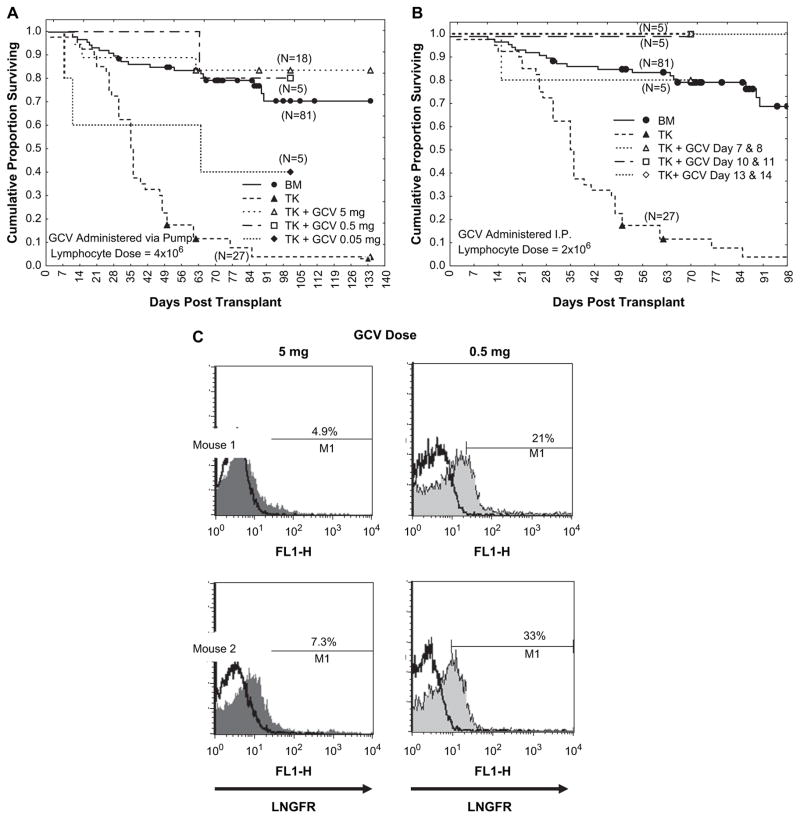Figure 5.
Effect of GCV dose and duration on ability to control GVHD and the number of circulating TK+TC. (A): Mice were given transplants as described in Materials and methods of 1 × 107 bone marrow cells alone (●) or 1 × 107 bone marrow cells and 4 × 106 TK+TC, with or without GCV (▲) and administered over 7 days via an Alzet pump from days 7 through 13 after transplantation at a total dose of 5 mg (Δ), 0.5 mg (□), or 0.05 mg (◆). The survival times of groups treated with a total dose of 5 mg or 0.5 mg were significantly longer than that of the untreated group (p < 0.00001 and p = 0.0002, respectively) and similar to that of the bone marrow–only control group (p = 0.74 and p = 0.76 respectively). For the cohort receiving a total dose of 0.05 mg, the survival time was similar to that of the untreated control group (p = 0.18) and worse than that of the bone marrow–only control group (p = 0.04). (B): Mice were given transplants as described in Materials and methods of 1 × 107 bone marrow (BM) cells alone (●) or 1 × 107 bone marrow cells with 4 × 106 TK+TC (TK) without GCV (▲) or with intraperitoneal (I.P.) administration of 2 mg/d of GCV on days 7 and 8 (Δ), days 10 and 11 (□), or 13 and 14 (◇). The survival times of all three treatment groups were significantly longer than that of the untreated control group (p ≤ 0.005 for all comparisons) and were statistically similar to that of the bone marrow–only controls (p ≥ 0.23 for all comparisons). (C): Approximately 100 μL of peripheral blood was collected on day 21 after transplantation from the tail vein of two mice given transplants as described elsewhere and treated with 5 or 0.5 mg of GCV via an Alzet pump from days 7 through 13 after transplantation. The percentage of circulating cells expressing LNGFR (shaded contour) was assessed by flow cytometry, and the percentage positive cells was determined by comparison with the immunoglobulin G isotype control (unshaded contour).

